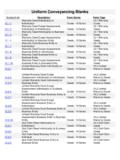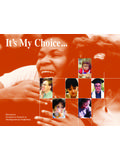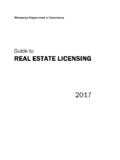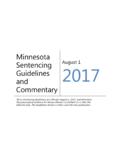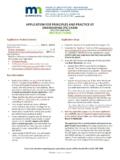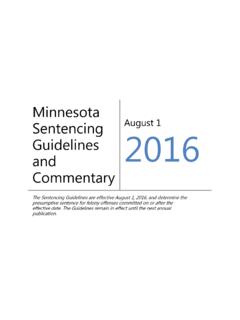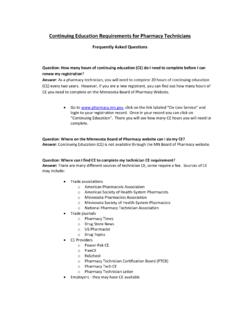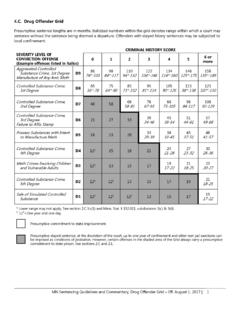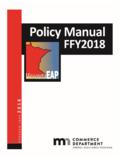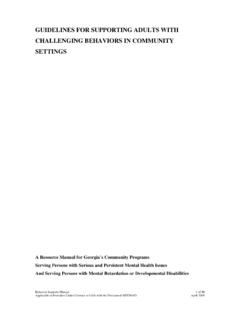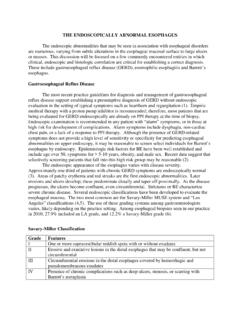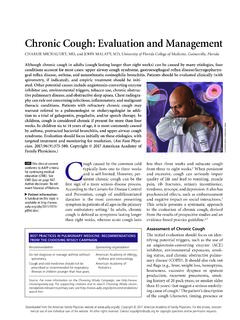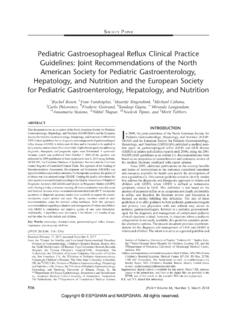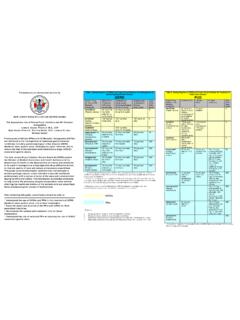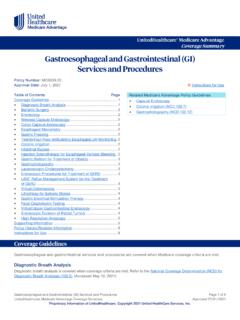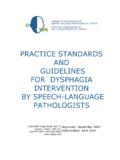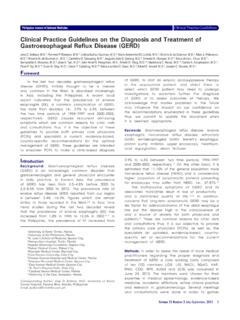Transcription of GUIDELINES FOR SUPPORTING ADULTS WITH CHALLENGING ...
1 GUIDELINES FOR SUPPORTING ADULTS WITH CHALLENGING BEHAVIORS IN COMMUNITY SETTINGS A Resource Manual for Georgia s Community Programs Serving Persons with Serious and Persistent Mental Health Issues And Serving Persons with Mental Retardation or Developmental Disabilities Behavior Supports Manual 1 of 88 Applicable to Providers Under Contract or LOA with the Division of MHDDAD April 2005 TABLE OF CONTENTS I. Preface Page 6 II. Purpose Page 7 III. Values of the Division of MHDDAD Page 8 A. Consumer Choice B. Inclusion C. Appropriate Environment D. Quality of Services E.
2 Individualized Services IV. Person-Centered Planning Page 9 V. Understanding Behavior Page 12 A. What is behavior? B. What influences behavior? C. What are CHALLENGING behaviors? D. How do we figure out what the CHALLENGING behavior is communicating or what is causing the CHALLENGING behavior? E. Focus first on possible medical or psychiatric issues. VI. SUPPORTING People In Positive Ways Page 21 A. What can I do on a day-to-day basis that might be helpful to the person? B. Using positive behavior supports. C. Combining person-centered planning with positive behavior supports. D. In VII. What Do I Do First? Identify and Remove the Cause of CHALLENGING Behaviors Page 25 A.
3 Show me some real examples of what you are talking about. B. The Wellness Recovery Action Plan (WRAP) is an effective way to identify and remove the cause of CHALLENGING behaviors. VIII. APPROACH I: Gather Information About The CHALLENGING Behavior Page 29 A. We have not been able to figure out the behavior! Now what do we do? B. What is a functional assessment? C. Looking for the A-B-C s. D. How much information needs to be collected and for how long? E. How do I collect information about the A-B-C s? IX. APPROACH II: Call In a Professional To Develop a Positive Behavior Support Plan (PBSP) Page 33 A. What is a Positive Behavior Support Plan (PBSP)?
4 B. Thirteen outcomes you should expect to find in a completed PBSP. C. What kind of professional can write a positive behavior support plan (PBSP)? Behavior Supports Manual 2 of 88 Applicable to Providers Under Contract or LOA with the Division of MHDDAD April 2005 D. How do I know that the plan is written using positive behavior approaches? E. Checks and balances to be sure staff know what to do. F. Review and oversight of the PBSP. X. What Can We Do If The Behavior Support Plan Is Not Working? Page 41 A. Seek additional review and consultation. B. What if the CHALLENGING behavior is affecting the individual s personal health and safety, or the health and safety of others?
5 XI. APPROACH IIIA: Develop A Crisis Plan Page 43 A. What is a crisis plan? B. What are the essential components of a crisis plan? APPROACH IIIB: Develop A Safety Plan Page 45 A. When should a safety plan be written? B. Where does the PBSP leave off and the safety plan begin? C. Are there any particular processes that must occur when a safety plan is used? D. Can medication be used in a safety plan? E. Should a safety plan be written when the health and safety of the individual or the health and safety of others is NOT affected? XII. Using Medications For CHALLENGING Behaviors Page 49 A. Is it ok to give medication for CHALLENGING behaviors?
6 B. Are medications EVER appropriate to give to someone with CHALLENGING behaviors? C. Are PRN medications ever OK to use for individuals living in the community? D. When we take an individual to the doctor, what does the doctor need to know? E. How should we prepare for a visit to the doctor? F. What information needs to GO BACK to best support the individual? G. In XIII. Emergency Safety Interventions of Last Resort Page 57 XIV. Affording Respect To The Individual, Observing Client Rights, Federal and State Laws and Departmental Rules Page 58 A. Afford respect to persons served. B. Know the story of the person you serve. C. Informed Consent.
7 D. Laws and Regulations. XV. Strategies That Maintain Resilience in Caregivers Page 60 XVI. We Hope The Manual Is Helpful Page 61 XVII. Those Who Gave of Their Time, Energy and Expertise to Make This Manual Possible Page 62 Behavior Supports Manual 3 of 88 Applicable to Providers Under Contract or LOA with the Division of MHDDAD April 2005 APPENDICES Appendix A: Learning to Listen Page 63 Appendix B: Physiological Issues to Consider Page 64 Pain Medical Considerations In the Approach to Problematic Behavior A.
8 General Considerations 1. Pain 2. Medication Effects, Medication Side Effects and Medication Toxicity B. Neurologic Effects 1. Headaches 2. Meningitis/Encephalitis 3. Dementia C. Eyes D. Ears, Nose, and Throat E. Pulmonary or Cardiovascular F. Gastrointestinal 1. Constipation/Fecal Impaction 2. Diarrhea 3. Inflammatory Bowel disease 4. gastroesophageal Reflux/Hiatal Hernia 5. Ulcer disease 6. Intestinal Parasites/Pinworms G. Genitourinary 1. Dysmenorrhea and Urinary Tract Infection 2. Premenstrual Syndrome and Premenstrual Dysphoric Disorder 3. Vaginitis and Vaginal Candidiasis H.
9 Integumentary I. Musculoskeletal J. Endocrine K. Menopause L. Hematologic Appendix C: Quality of Life Satisfaction Interview For Persons With CHALLENGING Behaviors Page 71 Appendix D: Glossary of Non-Restrictive Techniques Page 74 Brief Overview of Non-Restrictive Methods for Use in Positive Behavior Support Plans Definition and Characteristics of Non-Restrictive Methods That May Be Used in PBSPs 1. Positive Reinforcement 2. Negative Reinforcement 3. Extinction of Maladaptive Behavior that is not Dangerous 4.
10 Differential Reinforcement of Incompatible Behavior (DRI) 5. Differential Reinforcement of Other Behavior (DRO) Behavior Supports Manual 4 of 88 Applicable to Providers Under Contract or LOA with the Division of MHDDAD April 2005 6. Differential Reinforcement of Alternative Behavior (DRA) 7. Behavioral Contracting with Positive Consequences (Earning Extra Privileges) 8. Reinforced Practice 9. Contingent Observation 10. Response Blocking or Interruption 11. Restoration of Environment 12. Non-Contingent Dietary Management 13. Withdrawal to a quiet area 14.
